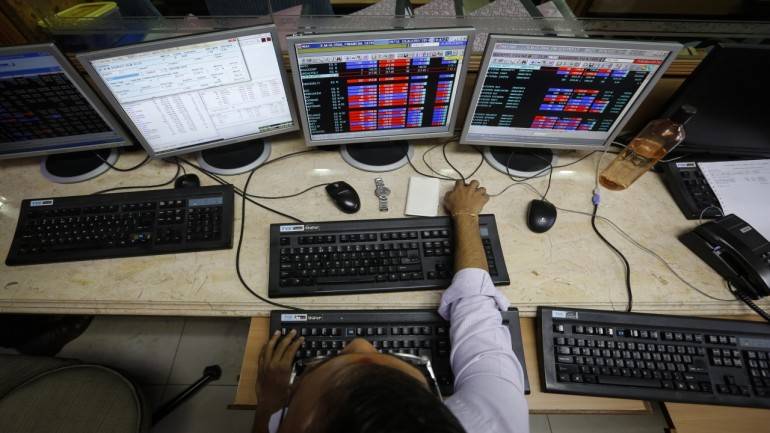
India is in a secular uptrend, which should continue in the long term as India’s fundamentals and macros continue to improve, Nitasha Shankar, Senior Vice President – Research at YES Securities (India) Ltd,said in an exclusive interview with Kshitij Anand of Moneycontrol.
Q) What are your views on the market which has already delivered about 20% return so far in 2017? How is the second half of the year expected to pan out? Do you see a Virat Kohli type of master blaster innings likely to repeat in H2?
A) We believe that India is in a secular uptrend. This uptrend should continue in the long term as India’s fundamentals and macros continue to improve. Lead indicators released over the last few weeks were positive to neutral, reinforcing a gradual macroeconomic improvement being underway.
We should see an improvement in the corporate fundamentals too. This, in turn, would further support the upward trend. Currently, the only risks to the markets may arise from global geopolitical events.
These could lead to knee-jerk reactions, but given the attractiveness of Indian markets on the global stage, I see a relatively quick recovery.
Q) Your list of top five stocks which could turn out to be multibaggers in the next 2-3 years?
Mahanagar Gas Ltd:
The company is the only operator in the city gas distribution space in Mumbai and adjoining areas. As such growth for MGL would be driven by: (i) anticipated growth in the number of CNG operated vehicles considering the current cost effectiveness of CNG as a fuel, (ii) potential growth in the number of households in the areas of operation and (iii) on commencement of gas supply to consumers in the Raigad district. The Economic benefit of natural gas over alternate fuels to drive growth in demand. The company has healthy financials and is cash rich.
Motherson Sumi Systems:
Motherson Sumi Systems Ltd (MSSL) is the flagship company of Samvardhan Motherson Group (SMG). It is a joint venture between Sumitomo Wiring Systems of Japan and SMG and is a global solution provider to the automotive industry for interior and exterior modules, rear view vision systems and wiring harness as well as to other industries.
It operates through 4 main product divisions – wiring harnesses, polymers, mirrors, and elastomers. MSSL operates in 25 countries from over 145 manufacturing facilities, supported by technical centers across the world. Along with its subsidiaries, it is one of the largest manufacturers of rear view mirrors, IP modules, and bumpers in Europe.
With a market share of ~65% in the passenger car segment, MSSL is the largest manufacturer of automotive wiring harnesses in India. It is also the largest manufacturer and supplier of rear view mirrors and plastic components in the country.
Going forward, we expect MSSL to continue seeing the growth that is driven by increasing the content per car on account of “premiumization” in the auto industry and by auto makers offering more features per car, substituting metal parts with plastic (polymer) parts to reduce vehicle weight, etc.
In addition to this, car makers, particularly the high-end manufacturers, are trying to increase their presence in the lower end segments as well. As a result, new models are being planned and launched.
This increases the scope of the market for companies like MSSL. In addition to this, improvement in the profitability of international operations through increasing capacity utilization and increased efficiencies will help boost profitability and returns as well.
VST Tillers & Tractors:
V.S.T. Tillers Tractors Limited (VSTT) is India’s largest power tillers player, having a market share of ~50%. The company has the capacity to assemble 60,000 tillers per annum. This product segment contributes to ~55% of its revenues. About 30% of revenues come from the sale of tractors.
While the company has been involved in this segment for decades, it has recently upped its focus on the same. We believe VSTT’s tractor business will drive growth going forward. With the company’s tractor plant currently working at 1/3rd of its assembling capacity, there is idle capacity available.
Tractor volumes have seen a sharp rise in the current year after two consecutive dull monsoons seasons. This, coupled with VSTT’s focus on increasing its reach and product offerings will lead the company to grow at a fast pace over the medium term
Q) What are your views on TCS and Infosys which declared their results last week? Which one is a better bet and how FIIs or domestic investors are placed in these stocks?
A) The IT sector is facing structural issues on several fronts, including deal sizes and pipeline, pricing, protectionist measures being adopted in countries like the US, and migration to digital.
In addition to this, IT companies are also facing currency headwinds. Although the relative performance of Infosys was better than that of TCS during the current quarter, these issues continue to haunt both companies.
Till such time as there is more clarity on them, we would prefer to stay neutral on them.
Q) Investors grapple with fear of investing at peak. What do you tell your clients to calm their fears?
At these levels, investors have started to get worried about whether they should invest or book profit. They are getting worried about the risks looming in the market. And, there is no dearth of risk to worry about.
The list includes geopolitical worries, pick up in corporate earnings, revival in private sector capex, liquidity levels, etc. And this has brought investors back to their original fear and that is whether they should invest at current levels or book profits.
The point is that we are never going to get a clear cut all-clear signal or even a get-out-now signal from the markets. As time and experience have taught us that timing the markets is an exercise that has not really yielded any result.
Even during times when risks appear to be high or when there is noise related to risks, it is best to revisit the basics of investing to understand whether it is time to invest or exit.
And, in our opinion, this is definitely not a time to exit Indian markets and is actually a time to stay invested in them. The markets are on an upward trend and this is expected to continue.
The biggest driver for this would be the improvement in corporate earnings. Although in the current quarter, the earnings growth was disappointing, however, it was on expected lines given the residual impact of demonetization.
More importantly, the persistent decline that we had seen till a few quarters back, has definitely eased off. We expect earnings to gain strength over the next 2 to 3 years. For FY18, we expect earnings to grow in the range of 15-18% (excluding the impact of GST).
We think these estimates are fair if we factor in improvement on account of i) Economy on an upward trajectory (ii) pro reform focus of the Government (iii) Government’s continued emphasis on reviving manufacturing sector through structural steps (iv) benign interest rates (iv) revival in rural consumption on the back of good monsoons (v) 7th Pay Commission payouts to give a further fillip to consumption led growth
Q) If somebody comes with you with a monthly investment of Rs15000-20000 to realise his crorepati dream. Can he realise his dream by investing in direct equities or it is better to go via MF route? What is minimum capital required to start trading?
A) At YES Securities, we have been advising clients to invest in companies through the systematic investment route in direct equities. It is imperative to invest in companies that have a long runway of growth ahead.
Companies whose strong historical performances are likely to continue going forward. Companies where disruption and competitive pressures are unlikely to hamper their financial performances in the future. Companies that are market leaders in their respective domains.
Companies that are unlikely to see a massive change in their business models over time.
There are multiple ways to play this out. While putting money in a lump sum manner is an option, it does wane out the possibility of making the most of the market declines.
Thus, a systematic transfer plan like structure is recommended – investors can park their funds in the savings bank account to earn the savings interest, with the money automatically getting deducted from this account on SIP days; thereby allowing the investor to earn such interest on the balance amount.
We believe this system allows you two benefits – making the most of the market movements, while your idle funds continue to work for you.
Q) Which sectors are on your shopping list and which ones are in line where you would like to book profits?
A) In terms of sectors, we remain positive on auto and auto ancillaries, given that they enjoy a multiplier effect on economic growth. We also like stocks from the infrastructure and capital goods space given the Government’s focus in that space.
We are thus optimistic on infrastructure, sectors linked to affordable housing, and consumption led sectors; we thus recommend investments in quality names in these spaces.
Q) Lot of money managers are sitting on cash levels and waiting for a dip. Hence, any big correction, if any will be bought into. What are your views?
A) As pointed earlier, for retail investors it would be futile to try and time the markets. Rather it would be better to invest in a systematic and disciplined manner.
A good way to do this is by investing a certain portion of funds through systematic equity/investment plans. This helps in eliminating the nuances of reading market levels on a daily basis.
Q) FII flows have been pretty steady so far in the year 2017 and with Yellen dovish stance, do you think the flows will only increase pushing benchmark indices even higher. What are your views?
A) As such the macro story for India still continues to remain strong on account of (i) Economy on an upward trajectory (ii) pro-reform focus of the Government (iii) Government’s continued emphasis on reviving manufacturing sector through structural steps and (iv) benign interest rates.
This makes India an attractive investment destination not just for domestic investors but also for foreign institutions. Although there could be periodic aberrations related to global events, however, over the long term, we believe that overall fund flows should remain in the positive territory.
Disclaimer: The views and investment tips expressed by investment experts on Moneycontrol are their own, and not that of the website or its management. Moneycontrol advises users to check with certified experts before taking any investment decisions.




